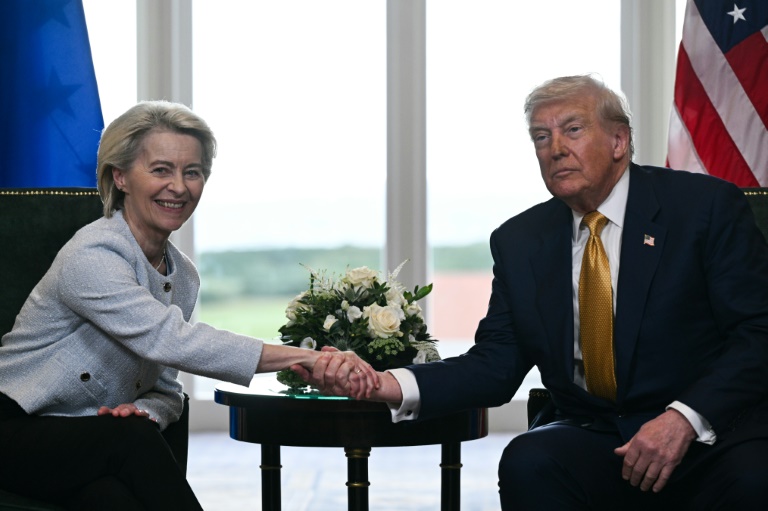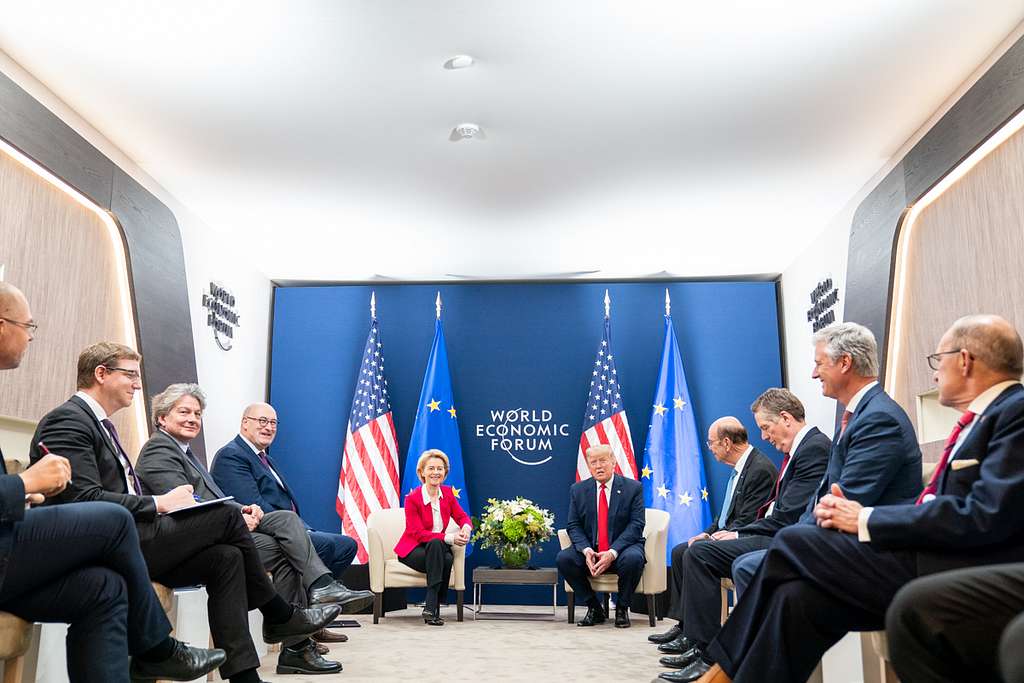
The United States and the European Union have reached a major trade agreement after months of negotiation. The deal is meant to reset economic ties and prevent a potential tariff war. It brings in new tariffs on European goods and includes large investment and purchase commitments from the EU.
Tariffs at the Center of the Deal
The agreement introduces a new tariff system that affects several important sectors:
- 15% rate: Most goods imported from the EU will now face a 15% tariff. This includes vehicles, pharmaceuticals, and semiconductors. The wine industry, particularly in countries like France, is also expected to be hit hard, as higher costs may reduce demand and affect jobs. While this rate is much higher than the earlier average of around 1%, it is still lower than the previously threatened 30%.
- 50% rate: Steel and aluminum will continue to face a 50% rate. These products have been at the centre of ongoing trade tensions, and the high rates reflect continued protectionist policies.
- Zero tariff rate: Some goods will remain duty-free. These include aircraft and their parts, certain chemicals, tools used in semiconductor manufacturing, and a few agricultural products. The EU accepted this tariff structure partly to avoid harsher measures. Many see the 15% rate as a compromise that helped prevent even steeper tariffs of 30% or more.
EU’s Investment and Purchase Commitments

In exchange, the EU has agreed to major financial commitments that are expected to boost the U.S. economy:
- Europe will purchase $750 billion worth of U.S. energy products by 2027.
- European companies will invest $600 billion in the United States by 2028, mainly in technology, infrastructure, and manufacturing.
- The EU also plans to spend hundreds of billions of dollars on U.S. military equipment, which could strengthen defense ties.
These promises are seen as a win for U.S. energy and defense sectors and reflect growing cooperation between the two sides. At its core, the U.S. appears to be signaling: “We’ll ease up on tariffs if you invest in our economy”, a deal the EU has agreed to by pledging major investments in key sectors like technology, defense, and energy.
Tariff Trade: Opportunities or Concerns?
The deal is expected to bring more predictability to US-EU trade. Many U.S. exporters, especially in agriculture and manufacturing, are hopeful about better access to European markets as the EU reduces some tariffs on American goods.
Still, there are concerns. European industries, especially steel and aluminum, will continue to feel the pressure from high U.S. tariffs. Smaller European businesses may struggle to adapt. Also, key areas like wine and spirits remain unresolved, with talks still ongoing. With the U.S. being the largest market for many EU countries especially Germany, Italy, and France, these less-than-ideal terms suggest the EU is simply trying to make the best of a difficult situation.
What Comes After the Tariff Rates
Not all the details of the agreement have been released with both sides continuing to discuss how to implement the deal and whether to adjust tariffs further. There is also talk of future cooperation in areas like digital trade and environmental policies, though nothing has been finalised yet.
The agreement also reflects a shift in power. The EU made concessions due to U.S. pressure, echoing patterns seen in other recent negotiations, including NATO-related support on Ukraine. This shows the U.S. currently holds a stronger position in setting trade terms.
This new US-EU trade deal avoids a damaging trade conflict and secures major investments. At the same time, it brings in a more complicated tariff system that will affect multiple industries. As more details are finalized, the full impact of the agreement will become clearer in the months and years ahead.
For more such articles, check out The World Times.



